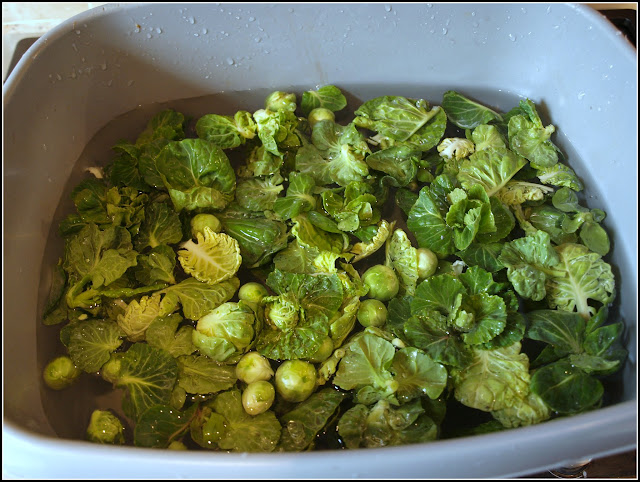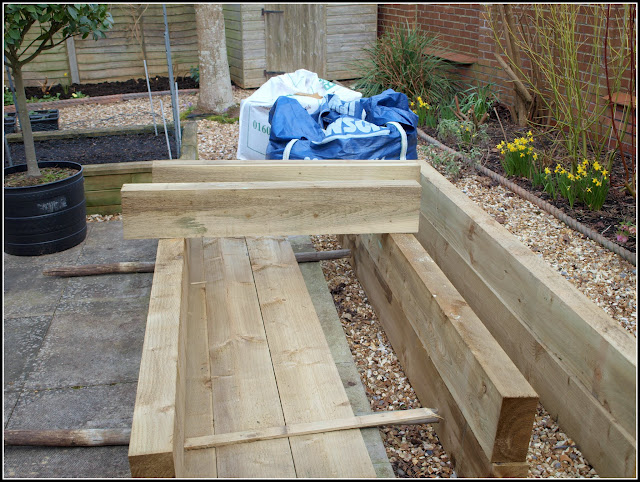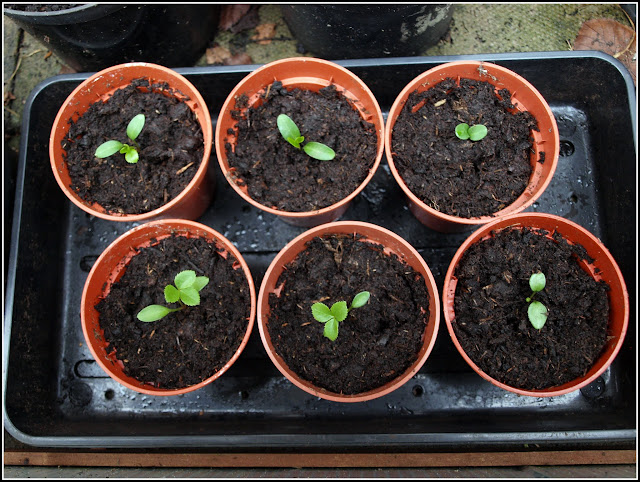I really do want to get on and build my new raised beds. Two things have been preventing this: wet and then very cold weather; and inertia. I keep looking at the pile of timber out on the patio and getting overwhelmed. I know it involves a fair bit of hard work, so keep finding smaller, easier tasks to do! My Fibromyalgia means that I have to take things relatively easy, and not do too much at once. However, I have now made a start...
I have removed the old paving-stones and the concrete and hardcore that supported them. The pavers are stacked neatly out of sight, round the side of the garage. My Goodness, how heavy they are! I will have to make several trips to the tip if I am not to overload the car. The old wood has been removed too. It was very rotten, and none of it was salvageable.
I have decided that this time I will shift all the soil from one bed to the next-door one, so that I can build the new timber bed more easily. Then, I will line the bed with a layer of compost from my bins, return the old soil to it, and finally top it up with a layer of the new topsoil I bought the other day. You can see why I say this is a big job!
The bed I am re-doing is the one which used to hold the Asparagus, and I have found that although I thought I had taken out all the plants, the soil is still full of Asparagus roots which all need to be removed. That aside, the quality of the soil is good. It has been there undisturbed for many years now, and had a layer of compost added every year, not to mention all the chicken manure and Growmore that has gone into it.
With the new raised beds, the depth is going to be nearly twice what it was before. The timber will be 40cm tall, though of course the bed won't be filled right to the top. All my beds are built on open soil too, so theoretically plant roots can go as deep as they like. They probably won't though, because the underlying soil is very poor and rock hard - which is one of the main reasons why I went for raised beds in the first place.
I have moved most of the soil onto the adjacent bed, and I have put in markers to indicate the position of the new bed. I'm allowing half a metre between beds.
One of the hardest tasks so far was sawing some of the sleepers in half to make the end-pieces for the beds. The timber is wet, which makes the task harder, but luckily I have a very effective saw.
As I worked, the local bird population watched me very closely, hoping that my digging would reveal some tasty morsels. The Robins (there are two of them most of the time at present - perhaps a breeding pair) are not afraid to dart in and grab a mouthful almost off the end of the spade, but the Blackbirds generally wait until I have moved away before they wade in.
Fluffed-up against the cold, this Robin is almost spherical:
This Blackbird has some very distinctive markings - almost like eye make-up!

















































